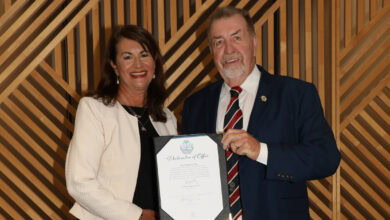Significant thought has had to go into the selection of the right species of trees when it comes to creating user-friendly, urban green spaces.
The Nicholas Street project team, along with landscaping professionals at Vee Design had to meet a strict selection criteria to ensure that the trees would provide the maximum amount of shade, be hardy and able to stand up to life in a public area, stay green and leafy year round, be able to thrive without extensive maintenance and not create any safety hazards.
It’s a tall order but the civic space’s newest inhabitants should fit the bill perfectly.
The trees selected, species Ficus Hillii, also known as a fig tree, will be well-established and mature when they are transported to their new home in the Ipswich Central civic space.
Expected to reach between 10 and 12 metres in height, the trees will produce a radial shade of around 12 metres, with a leafy canopy that will still let in light yet keep visitors cool during the hottest days.
To ensure that the trees’ root systems remain underground and don’t grow too large, the trees require just the right amount of water; minimal enough that they are an eco-friendly, low-maintenance and sustainable choice, yet enough to ensure that the roots don’t have to go ‘searching’ for water, which is when fig trees develop large exposed root systems.
The right trees for the civic space also had to have other characteristics.
They shouldn’t shed too many leaves so that extensive cleaning and maintenance would not be required, they must not shed any nuts or large berries which can be a trip hazard, or shed any flowers that can become slippery underfoot.
The Ficus Hillii species ticks all of these boxes, plus as a native tree, it will tie in perfectly with the trees across Bremer Street in the Riverheart Parklands and thrive in Ipswich’s sub-tropical climate.
One issue that can arise from the addition of fig trees to an urban area is the potential influx of bats who may view them as potential habitats, leading to extensive bat droppings and discarded fruit in the civic space.
And, while the bats are certainly attracted to these trees, the noise and light generated in the civic space by crowds, light shows, concerts and events, will more than likely see the bats selecting homes in trees in the parklands.
Another benefit of transplanting mature trees is that, by repurposing them, they are more likely to have a much longer life, and face less threat of being culled to make way for future development.
And, as such a prominent feature of the new Ipswich Central community and civic hub, it is likely that these trees will be around to shade many future generations


